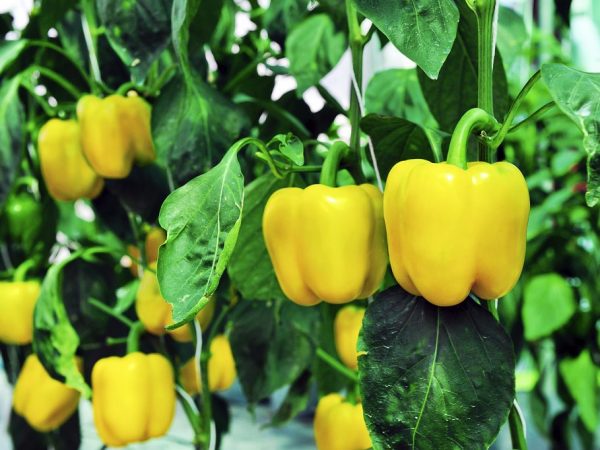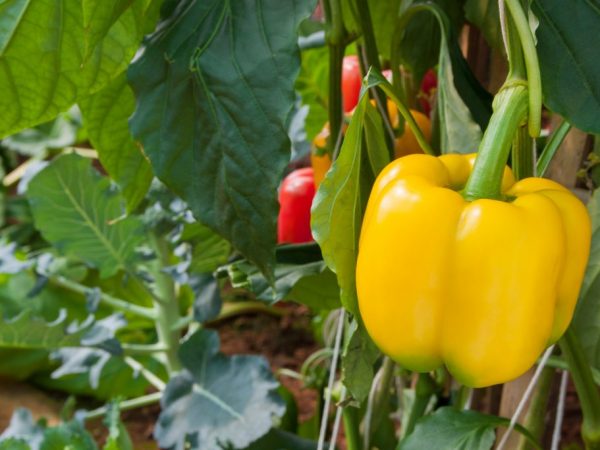Leaves turn yellow and dry: causes, treatment
The most vulnerable period for a plant is the seedling stage, they are not yet protected and are not adapted to independent growth. The fact that pepper leaves turn yellow is a very common problem among summer residents.

Pepper leaves turn yellow and dry
In order to protect the plants, you need to follow the basic rules of care. If the peppers turn yellow and grow poorly, as well as the leaves turn yellow and curl or dry, then the correct methods of healing and preventing diseases will help save or improve the condition of the vegetable. Peppers are vegetables that are susceptible to changes in temperature, air humidity and soil conditions, so you need to constantly monitor all risk factors.
Causes of yellowing leaves in pepper and eggplant
Bushes can turn yellow in a few days, even if the withdrawal was maximum.
The root causes of yellowing of the stem in peppers and eggplants can be different and caused by a number of interdependent factors, but the most common are:
- lack of moisture - these vegetables love moisture, so watering should be regular, especially on hot days;
- waterlogging - plants do not tolerate stagnant moisture, the roots rot from this, which causes the leaves to twist and fall;
- lack of nitrogen is one of the most important elements that are needed for normal plant growth and if it is not enough, then vegetables lose their blooming appearance and weaken, and young fruits soon fall off;
- lack of other macro- and microelements - if there is a lack of important chemicals, this can manifest itself in the form of yellowing of the leaves or even the entire stem;
- the effect of toxins - if the vegetables are planted in the wrong place, then they can be poisoned by toxins from the predecessor plants, then the lower or upper leaves turn yellow and fall off;
- diseases and pests - the most dangerous are late blight, viral mosaic, spotting and spider mites;
- the plexus of the root system and the "rivalry" of peppers among themselves - an overly close planting leads to a lack of fertilizers and resources in some plants and an overabundance in others.
Due to ignorance of these simple reasons, many, even experienced gardeners, have yellow, weak and stunted bushes. From non-observance of the rules of caring for vegetables, flowers and ovaries fall, and after that the harvest of such vegetables is three times less than usual.
Causes of yellowing of pepper leaves in a greenhouse

Greenhouse will not protect against yellow leaves
Sometimes it seems that the greenhouse is the most protected place, but summer residents forget about the rules for planting and growing plants, so even there the plants turn yellow and die. But there are a number of reasons that contribute to the development of unhealthy vegetables and to their death. Here are some things to look out for if peppers or eggplants are growing in a greenhouse:
- moisture level - since these vegetables are moisture-loving crops and sharply feel a lack of moisture, the best moisture level for peppers and eggplants is 70%, then homemade peppers will be sweet;
- soil composition - if there is a lack of fertilizer in the ground on which the peppers grow, then the stems almost immediately report this, changing the color of the leaves;
- temperature regime - even if a constant temperature is maintained in the greenhouse, early planting of seedlings, drafts or slight frosts can affect the condition of the plants and damage the delicate upper leaves;
- the presence of fungal or bacterial infections - especially often vegetables in greenhouses or greenhouses are affected by black leg, fusarium, verticillosis, septoria, gray rot, late blight;
- invasion of parasites - even in safe conditions, plants can be attacked by aphids, bears, slugs and many other pests that love green leaves of vegetables.
After the negative influence of all factors, plants in greenhouses simply may not grow to the required size and give very little or no yield at all. Therefore, it is necessary to create the right conditions for the growth and good formation of vegetables in greenhouses.
Causes of yellowing of pepper leaves in the open field
If the leaves of bitter, hot, sweet pepper turn yellow or the edges are curled, this is a reason to think about improving the conditions for its growth.
The reasons for yellowing of pepper leaves are usually the following:
- scarcity or lack of light - you need to carefully choose a place for planting plants, because these vegetables love sunlight and illuminated areas, and if you plant it in the shade or partial shade, the bushes and leaves will fade and turn yellow;
- excess light - very strong solar activity will contribute to the rapid decay of chlorophyll, and plants may turn yellow;
- temporary yellowing due to transplantation - this happens during planting in the ground, due to stress, but with good fertilizers and conditions for growth, this goes away;
- lack of fertilizers - if the plants do not have enough feeding, then the lower leaves turn yellow, and then the whole bush.
If you do not allow the occurrence of the above reasons, then the harvest will be larger and better than last year. Compliance with all the rules of care makes it possible to wait for the first fruits a short time after planting.
Treatment methods
If the leaves of sweet peppers turn yellow and fall off? To save plants from yellowing and disease, you need to pay attention to risk factors. If the lower or upper leaves have already turned yellow, then special care rules can help:
- Increased watering - if the top layer of the earth is dry and disintegrates, this can provoke the factor that the pepper has turned yellow, it is necessary to water it with a small amount of water every 3-4 days;
- Reducing watering - if you overdo it and water the plants every day, then you need to return to the watering regime every five days;
- Adding macronutrients or balanced fertilizers - you need to purchase an organic fertilizing complex and evenly distribute among the plants over the soil;
- Maintaining an optimal balance of temperature - the normal temperature is 25 degrees, and you also cannot water the seedlings or already planted peppers or eggplants with cold water, only warm and it is desirable to plant it;
- Closing the window with paper sheets or cardboard - if the plants turn yellow at the seedling stage, then at home there is always the opportunity to protect the plants from excess sunlight;
- Spraying from pests - pests can settle in the soil, so you need to spray bell pepper bushes with organic solutions from time to time, which will help strengthen the resistance of the plants;
- Correct planting - if possible, then each plant should be placed in a separate pot at the seedling stage, and when planted only in a well-lit area.
Improper care is the very first reason for yellowing of the leaves of salad peppers. Simple rules of prevention and treatment will help you get a high-quality harvest and healthy plants. If you find the right approach to each vegetable, then any pepper bush will delight you with good fruits in a short time.
Conclusion
Various diseases can damage crops and plants, and you need to know in advance what to do if the pepper turns yellow and its young fruits and leaves fall off. You need to constantly monitor the condition of the vegetables, because if the foliage turns yellow or falls off, this is the first bad call and a call to action against pests.
If the peppers turn yellow, grow poorly, the leaves curl, dry, or the fruits do not grow to the desired size, then you need to reconsider the approach to growing vegetables. After all, these cultures are very gentle and the slightest non-observance of the basic rules of care can ruin all efforts.


